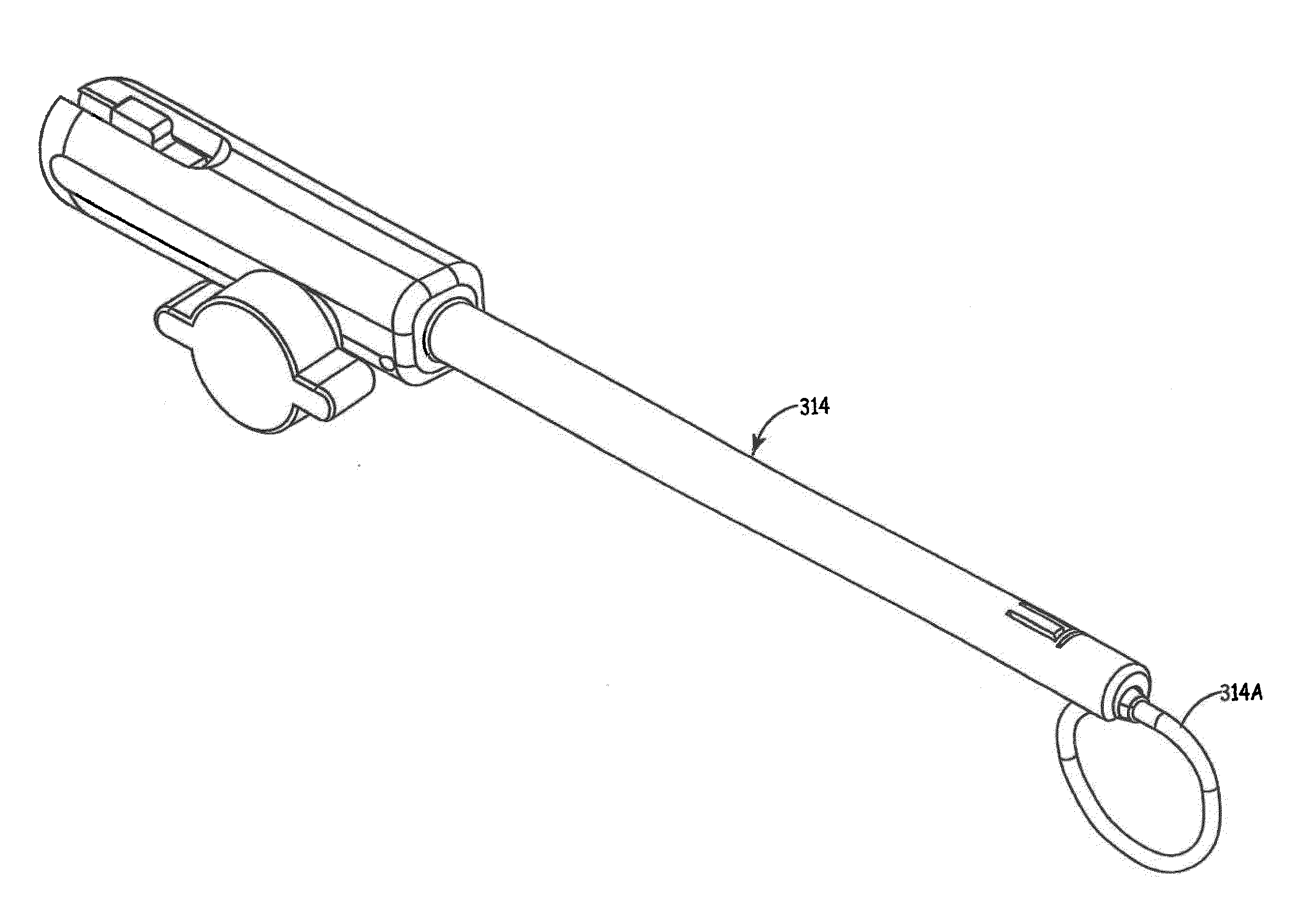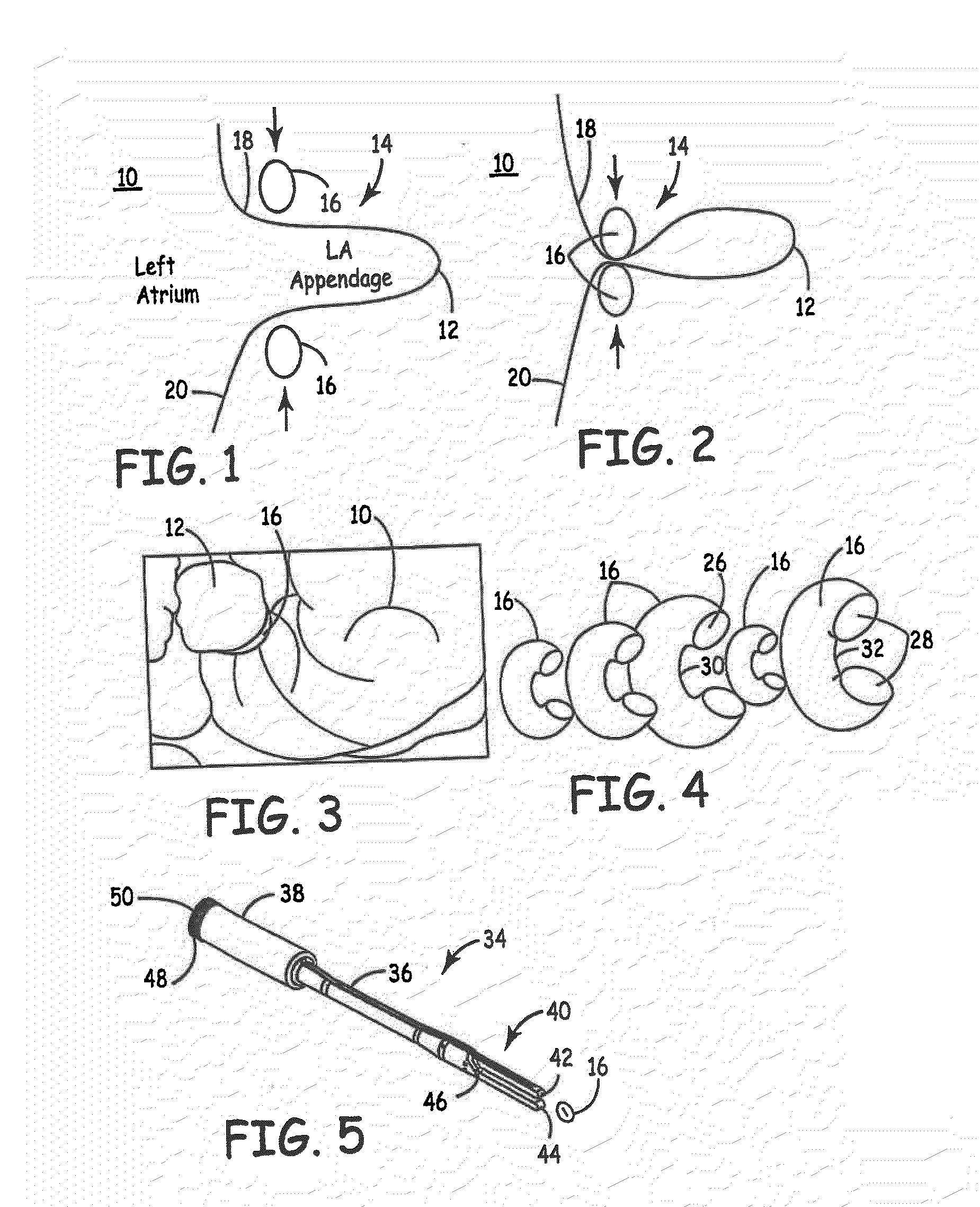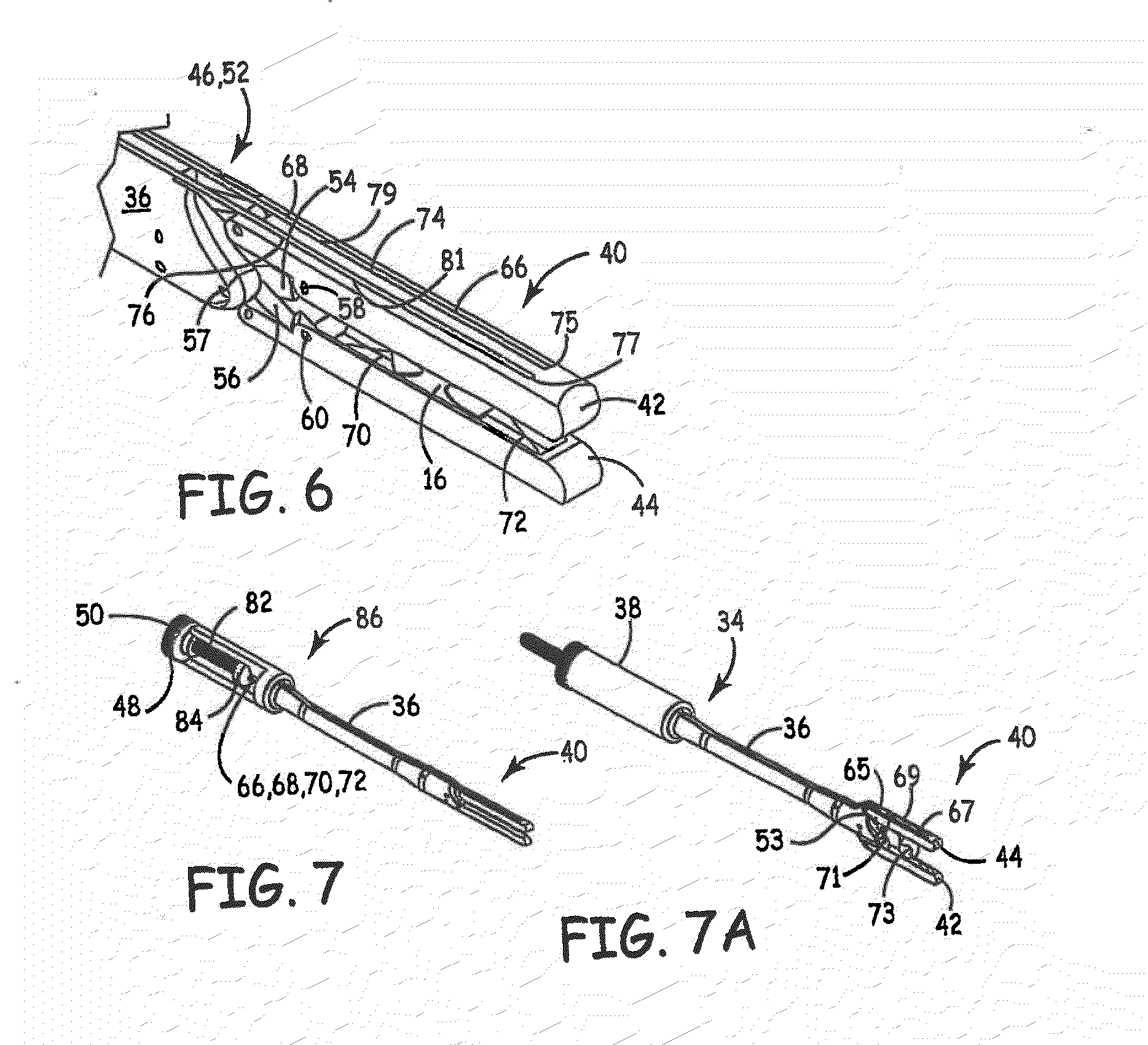Methods and Devices for Occlusion of an Atrial Appendage
a technology of atrial appendage and occlusion, which is applied in the field of methods and devices for occlusion or ligation of atrial appendages, can solve the problems of affecting the patient's life, affecting the patient's health, and causing bleeding and lifestyle compromises,
- Summary
- Abstract
- Description
- Claims
- Application Information
AI Technical Summary
Benefits of technology
Problems solved by technology
Method used
Image
Examples
Embodiment Construction
[0117]FIG. 1 illustrates an outline of the atrium 10 of the heart with the left atrial appendage 12 protruding therefrom. FIG. 1 also illustrates one embodiment of an occluder 14 forming a ring 16 that is placed in a position to surround the left atrial appendage 12 adjacent to a left atrial appendage base 18, where the left atrial appendage 12 is attached to the heart 20. In some embodiments, the ring 16 can be constructed of an elastic material to allow it to be stretched into an open position, as shown in FIG. 1. The ring 16 can be allowed to return to a closed position, as shown in FIG. 2, to bear against the tissue of the left atrial appendage 12 in order to close off any interior connection between the atrium 10 and the left atrial appendage 12.
[0118]FIG. 3 illustrates the ring 16 attached to a patient's heart 20 to isolate the left atrial appendage 12 from the atrium 10. In some embodiments, the material of the ring 16 can be biocompatible to allow the ring 16 to be left on t...
PUM
 Login to View More
Login to View More Abstract
Description
Claims
Application Information
 Login to View More
Login to View More - R&D
- Intellectual Property
- Life Sciences
- Materials
- Tech Scout
- Unparalleled Data Quality
- Higher Quality Content
- 60% Fewer Hallucinations
Browse by: Latest US Patents, China's latest patents, Technical Efficacy Thesaurus, Application Domain, Technology Topic, Popular Technical Reports.
© 2025 PatSnap. All rights reserved.Legal|Privacy policy|Modern Slavery Act Transparency Statement|Sitemap|About US| Contact US: help@patsnap.com



